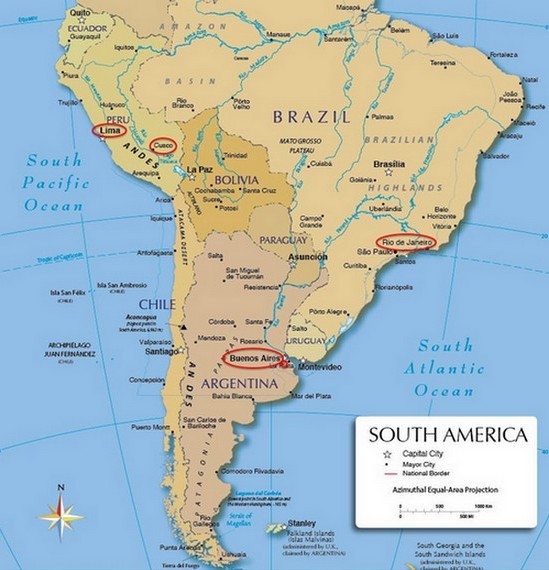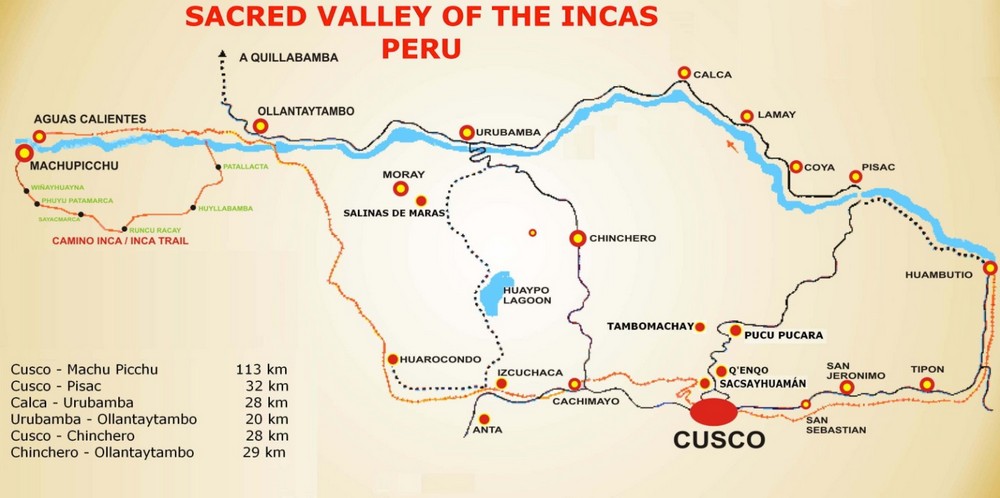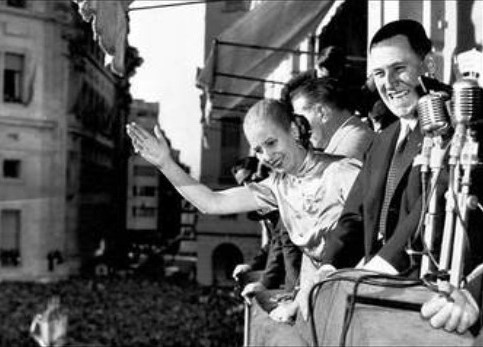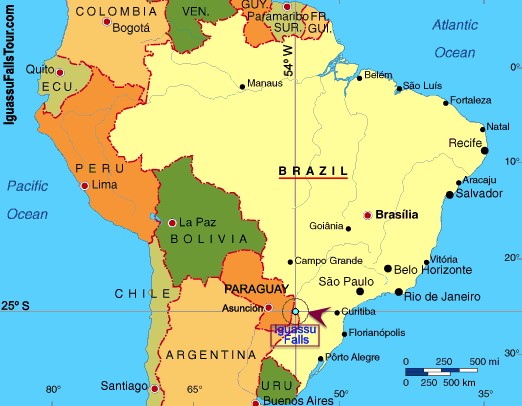

Travelogue
A Taste of South America
by Norman Bituin
Here we go again. The same two dutiful husbands escorting a group of ten nurses on their trip to South America, like we did two years ago in the Holy Land. Cherry arranged the private tour of 12 through a nurse (not joining this group) in their hospital whose mother owns the Lima Travel Agency in LA. This was a 16-day fully escorted tour from Oct. 2-18, 2017 that included 7 nights in Peru, 5 nights in Argentina and 3 nights in Brazil with all the land transportation and most meals included. The agency also booked the flights, all 9 of them, for the group using LATAM Airlines. For sure, everyone had a great time hopping and hiking in this land of the "Seven Wonders of theWorld" (Machu Picchu in Peru and The Christ Redeemer of Rio Janeiro in Brazil) and "Seven New Wonders of Nature" (Iguazu/Iguacu Falls in Argentina and Brazil).

Lima, Peru
The first stop from LA to Lima takes 9 hours.
[Only after the trip did we both find out. Fe Francisco, 3rd from left, is a UP Sigma Betan from College of Nursing.]
Lima, the capital of 10 million people founded by Spanish conquistador Francisco Pizarro in 1535, overlooks the Pacific Ocean.
Above the panoramic ocean view is Parque del Amor, as the group of 12 pose here for a shot.
To our pleasant surprise, Lima is a very clean and orderly city with many green areas. Almost like a Tokyo in South America.
School kids enjoy a field day at the Plaza Mayor while locals have a morning snack of ceviche at a street corner.
Basilica Cathedral of Lima
Situated in Plaza Mayor, the first stone of the original church was laid by Francisco Pizarro himself in 1535. Construction was completed in 1538.
A mural of the victorious conquistador Francisco Pizarro hangs over his tomb inside the Basilica Cathedral.
Church and Convent of Santo Domingo
The oldest religious complex of Lima and the monastery that St. Martin de Porres, the continent's first black saint, spent most of his life.
Santa Rosa was the first American saint. She is the patron saint of Lima, of Peru, of the New World and of the Philippines.
The final resting place for the three Peruvian saints with the skulls of San Martín and Santa Rosa encased in glass.
In 1821, José de San Martín proclaimed the Independence of Peru from Spain at Plaza Mayor.
The Government Palace
Rachel, an avid photographer, with mom Leni, takes a shot with her Fujifilm mirrorless camera at an Incan vendor selling coca leaves and candies.
The largest water and light show in Latin America, the Magic Water Circuit.
Cheers with our Lima tour guide, Ursula, at the 1880 Antigua Taberna Queirolo with the flagship Peruvian liquor, "Pisco Sour", and pan de jamon.
Sacred Valley of the Incas, Peru

All airport shuttle and land transport bus and/or van, exclusively for us, are provided. Here with our Cusco tour guide, Aracely.
Awanakancha Tourist Complex with Andean camelids and traditional textile weaving and dyeing
The Incas grow hundreds of varieties of maize.
To help adjust to the 11,000 feet elevation, hotels serve free coca tea to the guests. Shall we say - "a high for a high"?:)
Museo Inkariy
The museum has 12 houses that display the different Peruvian civizations beginning in 2600 BC with the Caral through 1200 AD with the Inca.
The Inca Empire was the largest empire in pre-Columbian America that arose from the highlands of Peru when Inca ruler Manco Capac founded Cusco in 1200. Spanish conquistador Francisco Pizarro met Inca ruler Atahualpa in 1532 and asked him to accept the rule of Spain and convert to Christianity. Pizarro's army with guns and cannons massacred thousands of Atahualpa's men and took him as hostage. Atahualpa offered the Spaniards enough gold to fill the room he was imprisoned in and twice that amount of silver. The Inca fulfilled this ransom, but Pizarro deceived them refusing to release the Inca afterwards. The Spaniards finally executed him in August 1533.
How much was Atahualpa's ransom? I did some research and here's one calculation:
Pisac Archaeological Site
Pisac is best known for its Incan ruins which lie atop a hill at the entrance to the valley.
The Incas constructed agricultural terraces on the steep hillside, which are still in use today.
The terraces enabled the production of surplus food at altitudes as high as 11,000 feet.
Francisco Pizarro and the Spanish conquerors destroyed Inca Písac in the early 1530s.
This is the highest elevation at 3,514 meters or 11,528 feet.
Pisac Colonial Town
Salinas de Maras
Since pre-Inca times, salt has been obtained in Maras by evaporating salty water from a local subterranean stream. Salt may be harvested only by the local inhabitants.
Moray Archaelogical Site
The Incas dug underground tunnels from the top of the mountain to channel the water to the terraces.
The site contains unusual Inca ruins, mostly consisting of several terraced circular depressions which have an irrigation system.
Enjoying excellent food and beer in an included lunch at 4-star Tunupa Cusco Restaurant.
The variety of Peruvian pan flutes produce a wonderful, soothing sound, as these two entertainers play at the restaurant garden.
Ollantaytambo Archaeological Site
Ollantaytambo dates from the late 15th century built by the Inca emperor Pachacuti and provided lodging for the Inca nobility.
This was where the Incas retreated after the Spanish took Cusco. It was the last
stronghold for Inca Yupanqui, leader of the Inca resistance.
.
The primary attraction is the Ollantaytambo Fortress in a section known as the Temple Hill.
On the mountain side, the Incas built storage houses (at background) with ventilation system to store agricultural crops.
Beautiful Inca children
We board the train at Ollantaytambo to spend the night at Aguas Calientes for the ascent to Machu Picchu.
Machu Picchu, Peru
Machu Picchu is a 15th century citadel situated on a
mountain ridge 7,970 feet above sea level.
Emperor Pachacuti, the ninth ruler of the Inca, built the estate around 1450 but abandoned it a century
later at the time of the Spanish Conquest.
The Spanish never found Machu Picchu and so did not plunder or destroy it, as they did many other sites.
It was declared a UNESCO World Heritage Site in 1983. In 2007, Machu Picchu was voted one of the New Seven Wonders of the World.
Malmon comes with me on mountain climbs, as in Egypt's Mount Sinai in 2015 (right).
Everest or K2 next? No problem. Malmon says we will do it when I'm back at 25 in my next life time, hehe.
YES, WE DID IT!!
There's a hiking trail going up to the top of the mountain. Takes about 4-5 hours, our guide said.
Here's a zoom shot of the hikers near the top of the mountain.
We pose for a group picture at "La Roca Sagrada" at the Plaza Sagrada.
Down from Machu Picchu to Aguas Calientes and the 2-hour bus ride to Cusco.
We are upgraded from Executive Class to First Class with an open bar and live Peruvian music in a private car.
Cusco, Peru
Flag-raising ceremony on Sunday morning at the town square.
Cusco Cathedral was completed in 1654 almost a hundred years after the construction began.
Koricancha, The Temple of Sun
This was the most important temple in the Inca Empire with vases of gold and silver and its walls covered with sheets of gold. Spanish reports tell of its opulence
was "fabulous beyond belief". For Atahualpa's ransom, most of the gold was collected from here. Spanish colonists built the Church of Santo Domingo on this site.
Sacsaywaman Archaelogical Site
The area has been occupied since 900. The complex was added to by the Inca from the 13th century. They built dry stone walls constructed of huge stones.
The Inca workers carefully cut the giant boulders to fit them together tightly without mortar. The site is at an altitude of 12,142 feet.
Tambomachay Archaelogical Site
Tambomachay consists of a series of aqueducts, canals and waterfalls that run through the terraced rocks that
served as a military outpost guarding the approaches to Cusco and/or as a spa resort for the Incan political elite.
Cherry and I try and share a guinea pig on the goodbye lunch for our tour guide, Aracely.
A view of the Cusco town square from Starbucks at a 2nd floor building.
A Sunday evening stroll at the plaza
Buenos Aires, Argentina
The waiter shows the different cuts of beef for your choice. Straight from the airport, here at the classy Restaurante Las Nazarenas with our BA tour guide, Rodrigo.
T-bone (left) and Ribeye (right). I am holding up the cooked T-bone at the table, one of the best I've eaten. Literally, "A (Beefy) Taste of South America".
The Obelisco de Buenos Aires is a national historic monument and icon of Buenos
Aires in the Plaza de la República.
Standing at 235 feet, it was erected in
1936 to commemorate the fourth centenary of the first foundation of the city.
La Avenida 9 de Julio is the widest avenue in the world. Its name honors Argentina's Independence Day, July 9, 1816.
Eva Duarte, born in poverty in the rural village of Los Toldos, became a stage and film actress who married President Juan Peron. She is adored by many Argentines
for helping women get the vote, securing labor benefits for the working classes and founding hospitals and orphanages. She died at age 33 in 1952 from cervical cancer.
School kids and the ladies enjoy walking through this beautiful rose garden.
La Recoleta Cemetery contains the graves of notable people, including Eva Perón, presidents of Argentina,
Nobel Prize winners, the founder of the Argentine Navy, and a granddaughter of Napoleon.
Buenos Aires Metropolitan Cathedral
Completed in 1791, Cardinal Jorge Mario Bergoglio was the Archbishop of Buenos Aires before he was elected as Pope Francis in March 2013.
In 1880, the remains of General José de San Martín, the liberator of Argentina, Chile and Peru, were brought from
France and placed in a mausoleum guarded by three life-size female figures representing the three liberated countries.
La Casa Rosada
La Casa Rosada (The Pink House) is the executive mansion and office of the President of Argentina.

The presidential balcony where Evita and Juan Peron waved to the crowds.
Not to be missed is the oldest coffeehouse, Cafe Tortoni, founded by a French immigrant in 1858 with its signature thick hot chocolate and churros. Yummy!
Caminito
Caminito is a colorful neighborhood in La Boca full of street eateries and "paradilla" (assorted grilled meat), dancers and artists.
A souvenir photo at Caminito
Señor Tango is an included tango dinner show, also to honor Evita.
Iguazu Falls (Cataratas del Iguazu), Argentina

Near our hotel is where the rivers Parana (clear water) and the Iguazu (brown water) converge.
Argentina is to the left; straight is Paraguay; and Brazil is to the right.
Due to the seasonal flooding, the water river turns brown as it carries a lot more silt and sediment from the lands it travels through.
Iguazu is the largest waterfalls system in the world. Upon seeing Iguazu, the US First Lady Eleanor Roosevelt reportedly exclaimed "Poor Niagara!"
(which, at 165 feet, is a third shorter). There are many separate waterfalls and cataracts, varying between 197 to 269 feet high.
For most of its course, the river flows through Brazil; however, most of the falls are on the Argentine side. The number of the smaller waterfalls fluctuates from 150-300.
Iguassu or Iguacu Falls (Cataratas do Iguacu), Brazil
Rio de Janeiro, Brazil
For our last stop, we are met at the airport by our Rio de Janeiro guide, Carlos.
An included samba dinner show at JW Marriott Hotel.
Christ the Redeemer (Cristo Redentor) of Rio Janeiro
The cog train rolls through the Tijuca Forest, the largest urban forest in the world, and up to the statue in Corcovado Mountain.
Rain and clouds cover the Cristo Redentor when we arrived.
The statue, located at the peak of the 2,300 feet Corcovado Mountain, is 98 feet tall and the arms stretch to 92 feet wide.
It was created by the French sculptor Paul Landowski and completed after 5 years
in 1931.
Luckily we waited and after some 20-30 minutes, the wind blows and clears the sky around the statue.
A view of downtown Rio de Janeiro from atop.
One of the four included churrasqueria meals with all kinds of grilled meat coming non-stop (until you say "no mas", or "não mais" in Portuguese).
Tan Manuel takes a shot of the Brazilian national drink, "Caipirinha", made with cachaca (sugarcane hard liquor), sugar and lime.
Looking at the paintings of local street artists.
Copacabana Beach
Fun listening to a lively samba jam from these seasoned musicians at a beachside drinks tent. Here's a short video clip from my iPhone.
"Tall and tan and young and lovely, The girl from Ipanema goes walking and when she passes,
each one she passes goes "ah" -- Brazilian singer Astrud Gilberto, composed by Antonio Carlos Jobim, 1963.
Sugarloaf Mountain
Sugarloaf Mountain is a peak reachable by two cable
cars rising 1,299 feet above the harbor.
Notice the jackfruit ("langka") growing amid the scenic view.
The long, scalloped beach of Copacabana extends for some 4 kms.
The Christ the Redeemer statue is faintly visible from the morning fog.
Statue of Antonio Carlos Gomes, the renowed Brazilian musician who composed the opera "Lo Schiavo" against slavery, died in 1896 in front of the Theatro Municipal.
There are still many old Portuguese colonial style homes in the city.
Kids play the national favorite game of "futbol" at the backyard while adults mind their own business playing a card game on the sidewalk.
Escadaria Selarón (Selaron Steps)
They are the work of Chilean-born artist Jorge Selarón who claimed it as "my tribute to the Brazilian people".
In 1990, Selarón began renovating dilapidated steps that ran along the front of his house. At first, neighbors mocked him for his
choice of colors as he covered the steps in fragments of blue, green and
yellow tiles – the colors of the Brazilian flag.
Of the 2,000+ tiles, 300-odd are hand-painted by Selarón depicting a pregnant African woman.
Selarón didn't comment on this except to say that it was a "Personal problem from my past".
There are 215 steps measuring 410 feet long which are
covered in over 2,000 tiles collected from over 60 countries around the world.
It started out as a side-project to his main passion, painting, but soon became an obsession. He was constantly out of money, so Selarón sold paintings to fund his work.
These ICU and ER nurses jumping, frolicking and having too much fun on the beach need to get back to work at the hospital!:)
The "Last Supper" in South America with our Rio tour guide, Carlos.
On our roundabout flight home via Santiago, Chile, we are rewarded with a beautiful view of the majestic Andes, the longest continental mountain range in the world.
Patronizing the local artwork, these are the paintings we bought from the street artists for our home.
Peru y Argentina, gracias!! Brasil, obrigado!!


